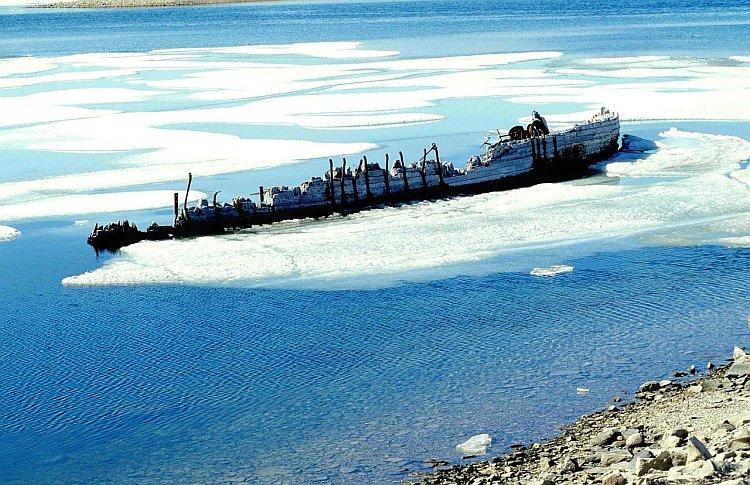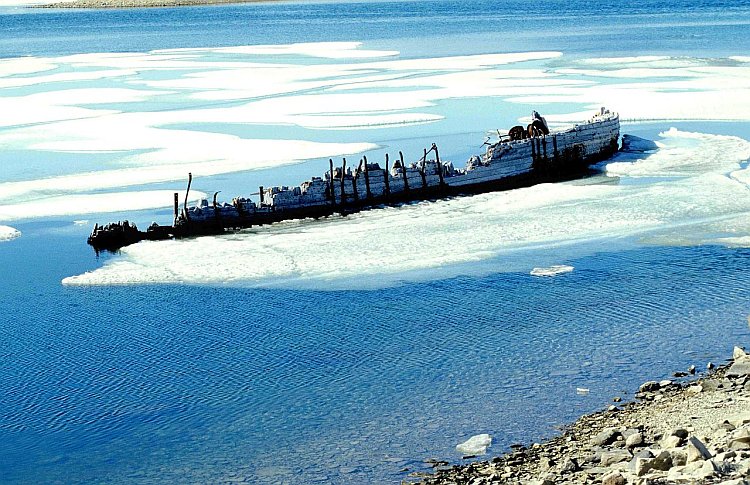The wreck of Roald Amundsen’s Maud may yet leave its icy resting place in Nunavut, Canada, where it has lain since it sank in 1930.
A group of Norwegian investors who own the Maud say they are appealing the federal government’s denial of an export permit to move the shipwreck to Norway where it would be the centerpiece of a museum to be built near Oslo.
The reason for the refusal of the permit—that an archaeological study must first be carried out on the wreck—came as a surprise according to Maud Returns Home, a website documenting the effort to bring the Maud back to Norway.
“We applied for an export permit based on the fact that Maud was not listed as an archaeological site, as it is not on the official control list,” the website stated.
“Despite this we do not oppose, in principle, an archaeological study, but we consider a further detailed study of the Maud as it lies today at the seabed in addition to what is already gathered through our Survey and Documentation of 2011 to be of marginal value.”
Amundsen, a national hero in Norway, was the first explorer to travel the Northwest Passage and reach both the North and South poles.
He set out in the Maud, named after one of Norway’s former queens, in 1918 in hopes of reaching the North Pole. After several attempts, the voyage proved unsuccessful (he later reached the pole by seaplane in 1925), and amid escalating debts, the ship was seized by his creditors.
Upon being sold to the Hudson’s Bay Company in 1925, the ship was renamed the Baymaud and used as a floating warehouse and wireless radio station in Cambridge Bay until it sank over 80 years ago.
Bought for $1
The community of Asker in Norway purchased the wreck from the Hudson’s Bay Company in 1990 for $1. In June of this year, ownership was transferred to investors group Tandberg Eindom, which wants to have the Maud towed 7,000 miles back to Norway, where it was built in 1917.
“This initiative will be a last opportunity to bring the remains of this once proud polar ship back home and give it a respectable place to rest in the years to come,” states Maud Returns Home.
However, a group in Cambridge Bay, Keep the Baymaud Committee, is circulating a petition that calls on the federal government to deny all requests for export permits, and prevent the Norwegians from removing the wreck.
“While we don’t deny the importance of the Maud to Norway, one also cannot deny the fact that she is a Canadian archaeological site that has been there since 1930 and should not be removed,” the petition states.
Now the fate of the legendary ship lies with the Canadian Cultural Property Export Review Board, which will decide whether to grant the Norwegians their export permit.
If the board agrees with Ottawa that the ship is of significant national importance, they can set an export delay period of up to six months that would give Canadians a chance to buy the vessel.
During the delay period, Canadian institutions and public authorities could make an offer to purchase the ship from its Norwegian owners with the help of a “Movable Cultural Property Grant” from Canadian Heritage.
If no offers are made by the end of the delay period, the Norwegian owners would be granted a permit for removal.
Ironically, a separate Norwegian research team was granted an export permit for the ship over 20 years ago, but let the permit expire.


